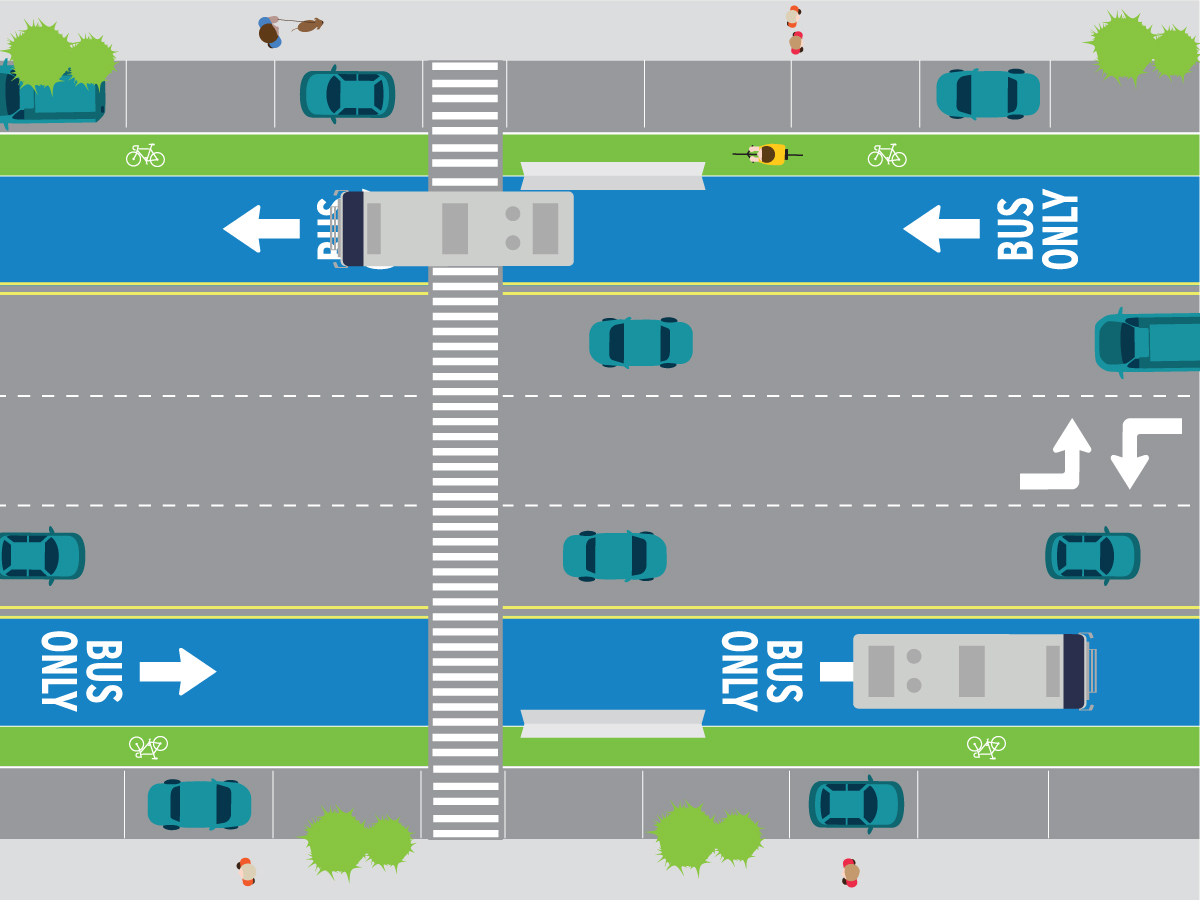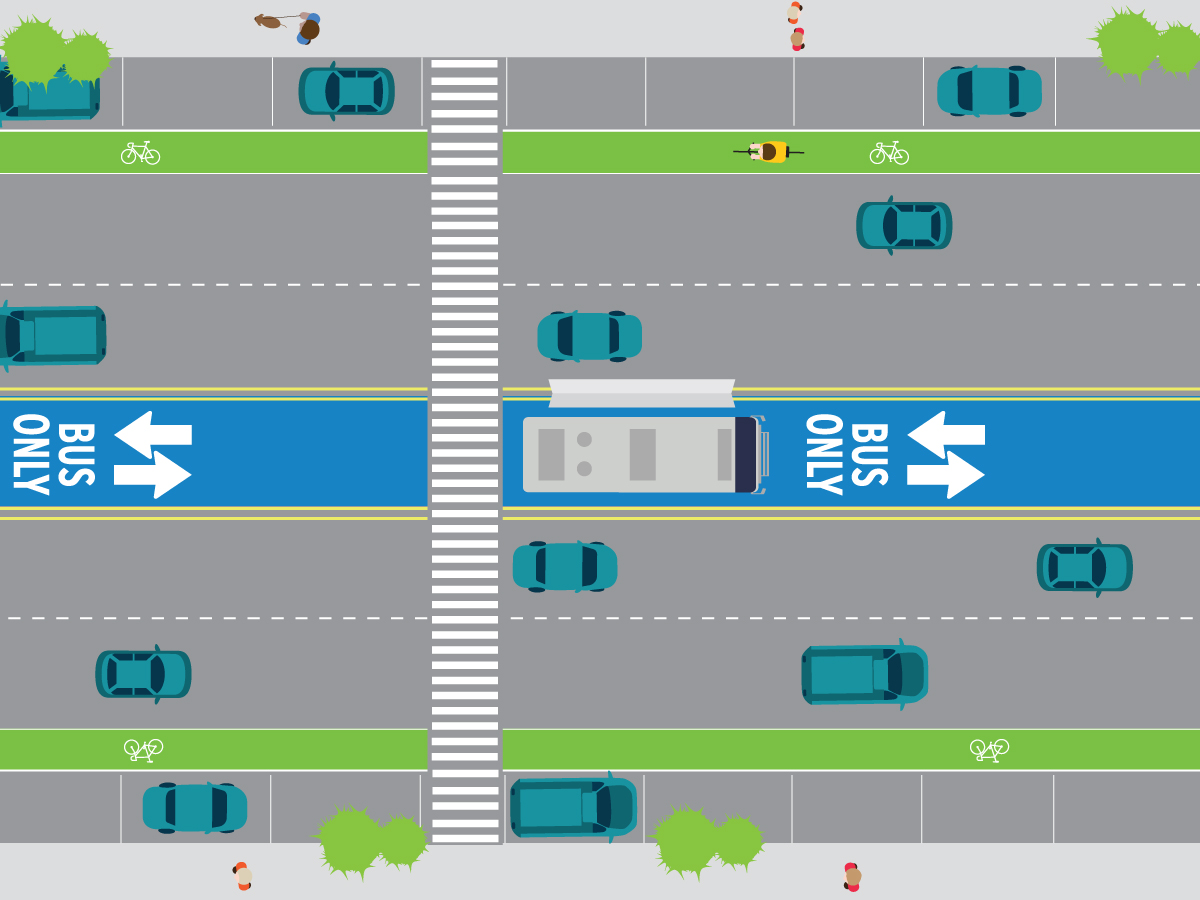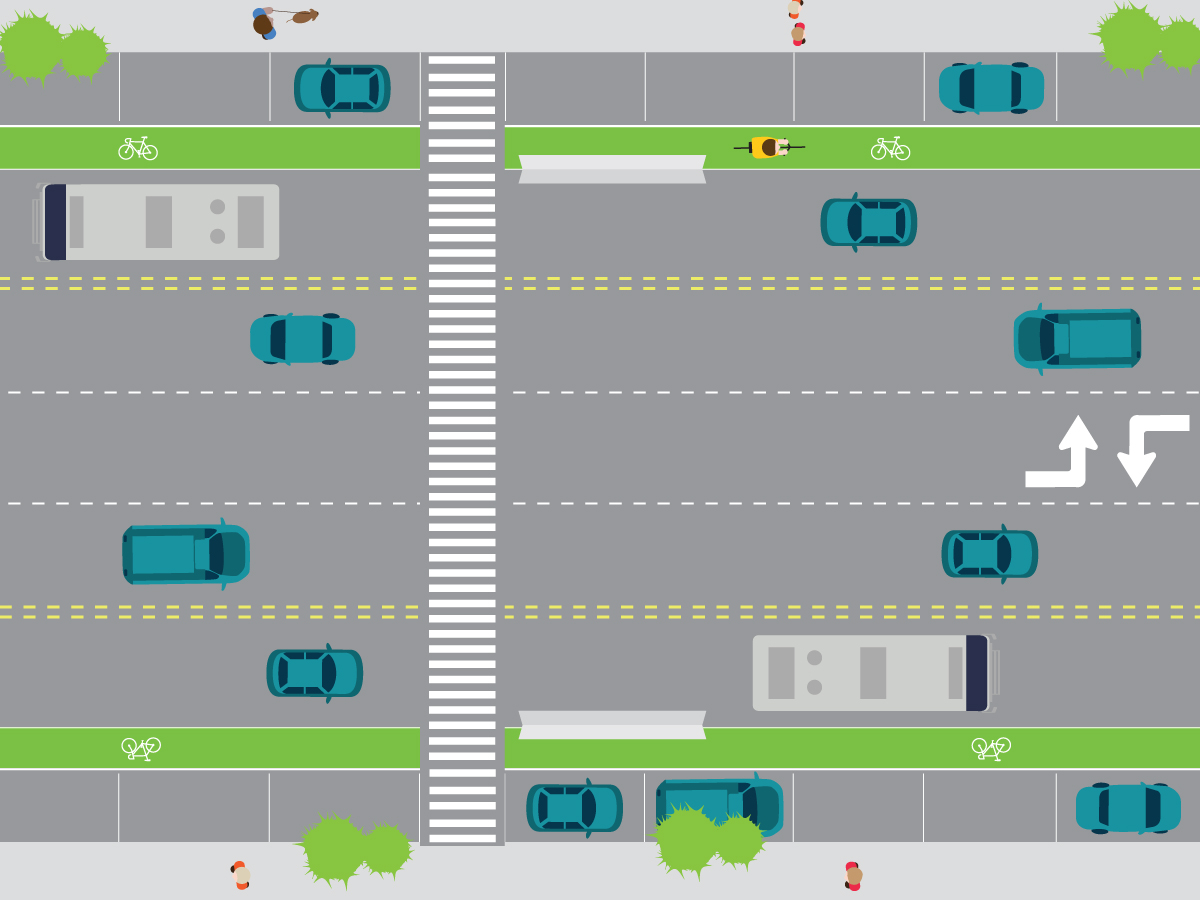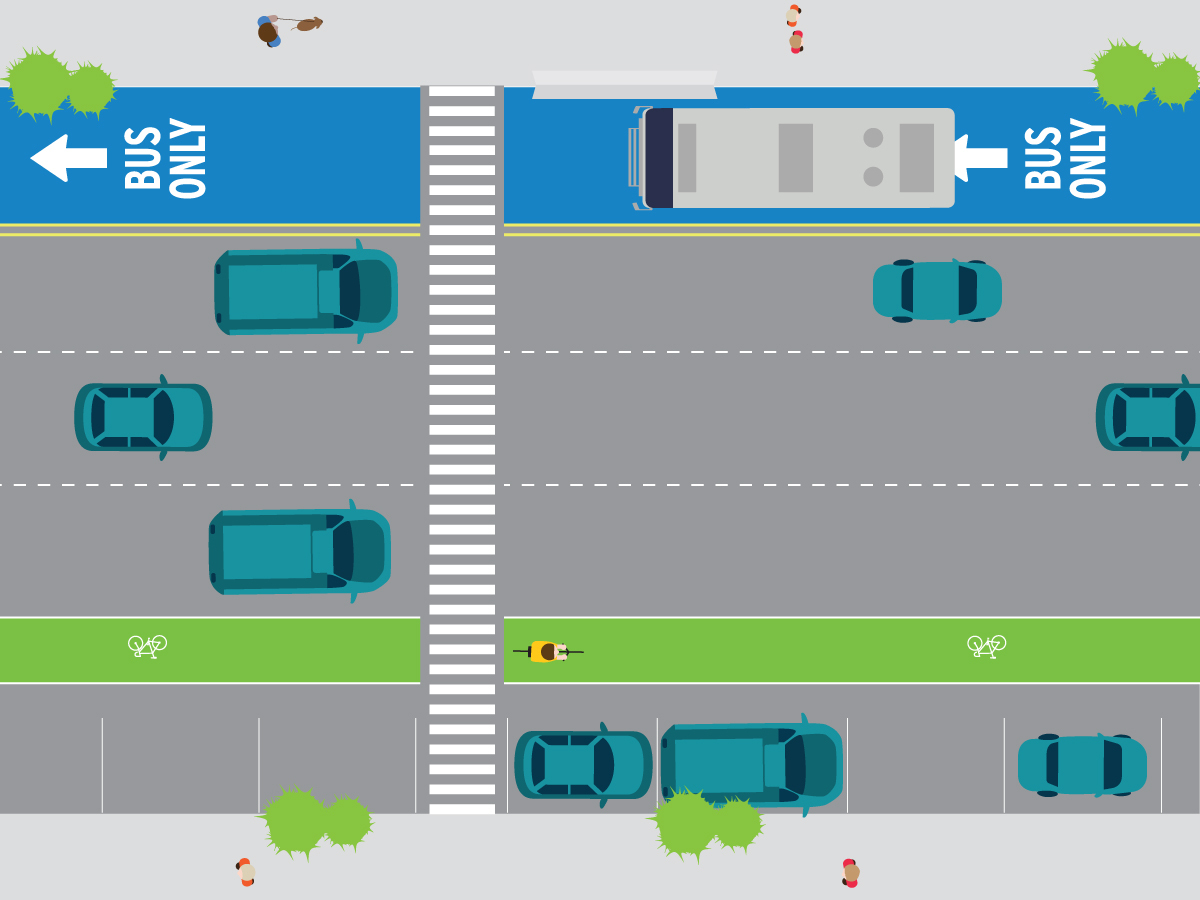Breaking Down Bus Rapid Transit Lane Options
BRT is a popular transit solution because it offers all the benefits and speed of a light rail train experience while providing a more cost-effective solution with greater appeal to pedestrians, bicyclists and other travelers. Knowing the different BRT options is important before considering BRT for your city. The different transit lane types within a BRT system serve diverse demands and priorities, catering to a variety of situations to deliver a superior transit system that fits your unique needs. You’ll need to consider the level of ridership and available space for infrastructure before deciding if a BRT solution is right for you. Below, we offer descriptions of the variations on BRT and examples of where these solutions are successfully being applied to help cities and towns achieve their transportation goals.
Dedicated Lanes
Dedicated lanes are bus-only lanes separating buses from mixed traffic congestion. Popular in areas with strong ridership demand, these lanes reduce route delays by offering greater passenger capacity and provide more dependable transit service. This is achieved by giving buses the right-of-way, using transit signal prioritization technology to reduce wait time. The fast, uninterrupted service gives BRT a competitive edge against other modes of transit, fueled by the efficient nature of dedicated lanes.
As Michigan’s first-ever BRT system, the Grand Rapids Silver Line is providing groundbreaking service with the help of dedicated lanes. The 9.6-mile BRT system crosses through three municipalities and offers contemporary features like real-time lighting via each shelter’s rooftop, level boarding capabilities and precision docking for full wheelchair accessibility for a modern experience. Since its opening in 2014, the Silver Line has reduced route travel time from 45 minutes to 27 minutes and has increased ridership by about 2,300 riders per day (or about 40 percent) thanks to the benefits of dedicated lanes.
Bi-directional
A variation of the dedicated lane, bi-directional lanes function as bus-only lanes but allow bus traffic traveling in both directions to share a single lane. Transit signal prioritization technology plays a vital role in an operable bi-directional lane, indicating lane availability by signaling to buses when it is safe to continue and stopping them at the BRT stations or holding points when the lane is in use. The bi-directional lane provides the same benefits as a singular dedicated lane without the need for an additional bus lane, helping preserve space for parking spaces and maximizing lane usage along built-out corridors with limited/premium right-of-way.
When fully operational in 2018, the Indianapolis IndyGO Red Line BRT will take the title for Indiana’s first BRT system as well as Indianapolis’ first all-electric BRT, rolling out impressively quiet all-electric buses releasing zero emissions. Phase I of the Red Line, at 13.5 miles in total length, will feature one of the longest bi-directional BRT lanes in the US (3.5 miles), helping eliminate the need for an additional bus lane, minimizing construction and maintenance costs, maximizing the available right-of-way, and maintaining most of the on-street parking that was a priority for the community members along the corridor. The Red Line will help to increase mobility standards for Indianapolis, providing efficient transit service to more than 100,000 residents within walking distance of the BRT’s 28 stations and making the Red Line a smart public transportation solution.

Mixed Flow Lanes
Mixed flow lanes cater to both buses and regular traffic vehicles, a good option for prioritizing buses even when dedicated lanes are not attainable. Though both transit and non-transit vehicles share these mixed flow lanes, special design features can be added to enhance the BRT travel experience. Elements such as traffic signal prioritization and queue jump lanes—special priority lanes that help reduce transit delays at busy intersections and optimize lane integration for buses—help prioritize buses and provide them with right-of-way privileges in these mixed flow lanes. Mixed flow lanes require little to no roadway redesign, making them a cost-effective option for BRT systems seeking improvement over a regular bus system. In addition to low implementation costs, mixed flow lanes help maintain connectivity with local buses adjacent to the roadway.
Mixed flow lanes are helping Seattle’s Madison Street BRT maintain connectivity to businesses along Madison Street. In combination with dedicated lanes, the mixed flow lanes have reduced the average travel time along Madison Street by an estimated 33 percent for riders during peak hours—cutting travel time from 22.5 minutes in one direction to an average of 15 minutes. When fully operational, the Madison Street BRT will be Seattle’s first all-electric BRT.
Hybrid Lanes
Hybrid bus lanes alternate between dedicated bus-only portions and mixed flow portions. Sometimes called business access travel (BAT) lanes, these lanes leverage both the benefits of dedicated lanes and the benefits of mixed flow lanes, helping maintain connectivity to local businesses in some areas while still prioritizing speed and reliability in others. This customizable solution can be tailored to a city’s individual needs, helping address varying demands and priorities throughout the route one block at a time.
The Indianapolis IndyGO Red Line BRT system incorporated the BAT lanes in the downtown area provide access to business and parking buildings along while providing premium transit service along these built-out corridors.
Contraflow Lanes
Contraflow lanes are dedicated lanes traveling against the flow of general traffic, enabling buses to travel both with and against the flow of general traffic on a one-way street. These lanes preserve space and maintain speed even throughout heavy congestion by eliminating the costly need to create another bus route and bus station while delivering faster transit time.
Each BRT system is a custom-fit for the town or city it resides in, utilizing these different lane types to provide the highest level of transit service for residents and visitors. Cities have varying demands, priorities, levels of ridership and availability of infrastructure. While the different types of BRT lanes all serve varied situations-ranging from improved travel times, speed, reliability and frequency of service-all lane types have one common characteristic: to improve transit and serve the community. This is what makes BRT such a smart solution.


I approach projects of different types and sizes with the same mission: to improve mobility options and the quality of life for all transportation users.
